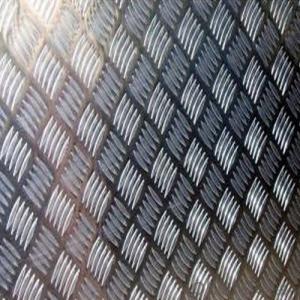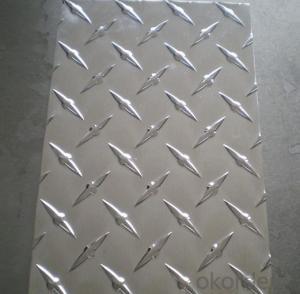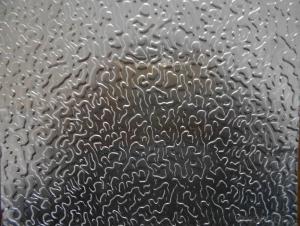1 4 Aluminum Checker Plate
1 4 Aluminum Checker Plate Related Searches
Led Light Bulbs For Ceiling Fixtures Led Lamps For Ceiling 42 In Ceiling Fan With Light Aluminum Coil Stock For Gutters Aluminum Foil For The Grill Hole Saw For Aluminum Plate Aluminum Tread Plate For Trailer Bow Plate For Aluminum Boat Aluminum Foil For Grow Room Aluminum Foil For Joint PainHot Searches
Stock Price For Aluminum Aluminum Coil Stock For Sale Aluminum Gutter Coil For Sale Used Aluminum Scaffolding For Sale 1/4 Aluminum Plate For Sale Aluminum Bar Stock For Sale Aluminum Round Stock For Sale Aluminum Diamond Plate For Sale Aluminum Scaffolding For Sale Craigslist 6061 Aluminum Plate For Sale Aluminum Dock Plate For Sale 7075 Aluminum Plate For Sale Aluminum Tread Plate For Sale Aluminum Checker Plate For Sale Aluminum Plate For Sale Near Me Plate Aluminum For Sale Aluminum Plate For Sale Aluminum Square Stock For Sale Aluminum Flat Stock For Sale Billet Aluminum Stock For Sale1 4 Aluminum Checker Plate Supplier & Manufacturer from China
Okorder.com is a professional 1 4 Aluminum Checker Plate supplier & manufacturer, offers integrated one-stop services including real-time quoting and online cargo tracking. We are funded by CNBM Group, a Fortune 500 enterprise and the largest 1 4 Aluminum Checker Plate firm in China.Hot Products
FAQ
- Aluminum sheets have the ability to be painted or coated. Aluminum, being a versatile material, can easily be painted or coated in order to enhance its appearance or improve its performance. The key to successfully painting or coating aluminum lies in adequately preparing the surface and using appropriate primers or coatings specifically designed for aluminum. To achieve this, the aluminum sheet's surface must be thoroughly cleaned, devoid of any oils, dirt, or oxidation, and may require sanding or etching to promote adhesion. Once the surface is prepared, a wide array of paints or coatings can be applied, including liquid paints, powder coatings, and anodizing. These finishes offer various advantages such as heightened corrosion resistance, improved durability, enhanced aesthetics, and even specialized properties like heat resistance or anti-microbial properties. It is crucial to seek professional advice or adhere to the manufacturer's instructions to ensure the correct application and long-lasting effects of the paint or coating on aluminum sheets.
- The modulus of elasticity for aluminum sheets, also known as Young's modulus, is typically around 69 GPa (gigapascals) or 10 million pounds per square inch (psi). This value represents the measure of the stiffness or rigidity of the material. However, it is important to note that the modulus of elasticity can vary slightly depending on the specific alloy composition and tempering of the aluminum sheet.
- On the web page to see more information on the plating aluminum plate, I do not know what is the difference between aluminized and aluminum plating performance?
- Hot dip aluminizing applicationsAluminized steel is widely used. The type I aluminized steel plate, originally developed, is mainly used in automobile exhaust pipes and silencers. Type II is used mainly for roofing and side walls of buildings, as well as for chemical containers. The aluminized steel wire produced by the new process is expected to be used as the core of the transmission line instead of the galvanized steel wire. Aluminized steel pipe has been widely used in power plants, boilers, water wall tubes, steam pipes, heat exchangers and so on. Aluminized steel structure has been widely used in power transmission tower, told highway guardrail and so on.
- What kind of paint should be sprayed on the aluminium board?
- Aluminum sheet refers to the rectangular plate made of aluminium ingot rolled and divided into pure aluminum plate, alloy aluminum plate, thin aluminum plate, middle thick aluminum plate and pattern aluminum plate.
- Several factors, such as sheet thickness, alloy type, and bending method, determine the minimum bending radius for aluminum sheets. However, as a rule of thumb, the minimum bending radius is usually 1.5 to 2 times the sheet thickness. For instance, if your aluminum sheet is 1mm thick, the minimum bending radius would be approximately 1.5 to 2mm. It's worth mentioning that these values may vary, so it is advisable to consult the manufacturer's or a professional's specific material and bending guidelines for the best outcomes.
- Indeed, staining is not a concern when it comes to aluminum sheets. This is due to the formation of a natural oxide layer on the surface of aluminum when it is exposed to air. The presence of this oxide layer serves as a safeguard, effectively preventing both staining and corrosion. Nevertheless, it is worth mentioning that extended contact with specific chemicals or acidic substances can still result in discoloration or staining on aluminum sheets. To maintain the impeccable appearance and durability of aluminum sheets, it is advisable to engage in regular cleaning and maintenance practices.
- I recently moved into a 1975 house with aluminum wiring. I will be going through and checking/replacing all receptacles and switches with CO/ALR rated ones as I don't have a budget right now to rewire the house. I am wondering if I should be checking all of the ceiling lights as well as some of them would be very difficult to access. Are lights as big a concern with aluminum connections as receptacles? I am sure some of the lights are newer and would have copper wire connected to the aluminum. Should I be concerned about the type of wire nuts used here?Anything else that I should be checking?
- Connections at ceiling lights have far less potential for a problem, but a potential none the less. So, while you are at it, go ahead and check them. The antioxidant compound and al/cu listed wire nuts (marriets) are the correct and proper materials to use. I applaud you for having done your homework. After tightening each connector be sure to pull on each and every wire to ensure they are good and tight. When combining solid and stranded wire, slide the stranded past the solid about an 1/8 before capping. We in the trade use 9 lineman's pliers to twist all wires before capping them. An inexpensive pair (of Lineman's) can be had for under $20. A good pair of wire strippers (with built in screw cutters) can be had for about $15. I mention the screw cutter because there is a good chance that somewhere along the line you will find a location where the stock 7/8-1 screw bottoms out against something before it gets tight. If you force it it will strip out. Not to mention it might dig into the insulation on a wire resulting in a short. Screws in devices (receptacles, switches, dimmers etc.) are 6-32 and light fixtures are typically 8-32. I would also get a non-contact tester. A.k.a. inductive tester. Very handy at times. When you are sure the power is off to a box it might not be. On an occasion another hot will be present. The beep testers will quickly alert you to the presence of another live circuit. A multi-tester will allow you to identify wires should you fail to mark them before working on them. If you mark the location of each wire to a 3 or 4-way switch before replacing it you will save yourself a lot of time. Same with wires to any GFI receptacles. Swapping wires location to location may not be correct. Some have the Line terminals on one side, while most have them on the top. But I get the impression you have a bit of experience or a friend who does helping you with this.
- How much is the price of the 6061 aluminum plate?
- The price is very transparent on the 6061 aluminium plate market!Manufacturers also have several: there are Henan, Zhejiang, Guangdong, Chongqing, Shanghai, but the prices are almost the same.There are 6061 aluminum sheet, plate, state difference; prices are not the same.6061 aluminum sheet price: national standard sheet 0.8-5.0, thickness 38/ kgGB thick plate 5.0-300, thickness 27/ kgNon standard alloy aluminum plate 20-21/ kg














































